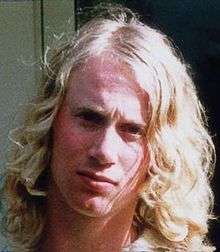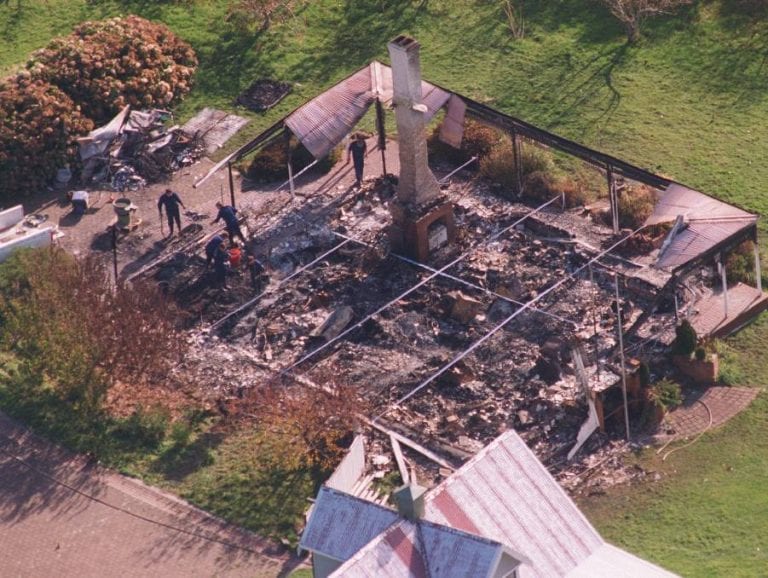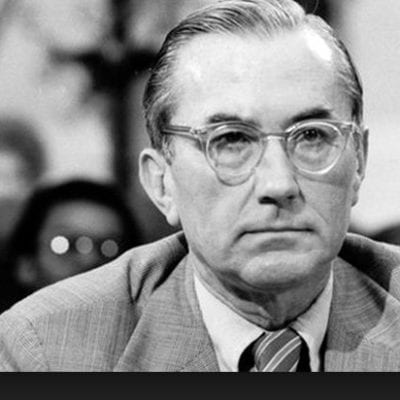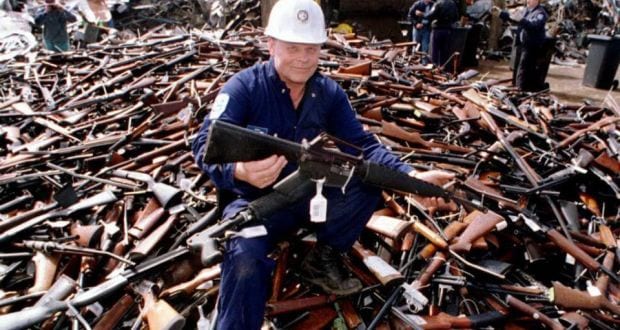“We are going to see a mass shooting in Tasmania…unless we get national gun control laws.”
– Roland Brown, Chairman of the Coalition for Gun Control, uttered on “A Current Affair with Ray Martin”, March 1996
At 1.30 p.m. on Sunday 28 April 1996, an unknown professional combat shooter opened fire in the Broad Arrow Cafe at Port Arthur in Tasmania, Australia. In less than a minute 20 people lay dead, 19 of them killed with single high-velocity shots to the head fired from the right hip of the fast-moving shooter.
In less than thirty minutes at six separate crime scenes, 35 people were shot dead, another 22 wounded, and two cars stopped with a total of only 64 bullets. A moving Daihatsu 4WD driven by Linda White was crippled by a “Beirut Triple”, normally reserved for dead-blocking Islamic terrorists driving primed car bombs around the Lebanon.
One sighting shot, a second to disable the driver, and a third to stop the engine before the primed car bomb can hit its target and explode. Very few people know of this technique, and only a handful of experts can master it with only three bullets.
The Diversion
On the Sunday morning, two hours before the murders, ten of the senior managers of Port Arthur were taken to safety many miles away up the east coast, for a two day seminar with a vague agenda and no visiting speakers.
Was the timing of this trip a mere coincidence?
Also, about an hour before the shooting commenced, an anonymous phone call was made to the police. The unidentified caller reported a large quantity of heroin stashed at a coal mine situated near Saltwater River at the extreme west end of the Tasman Peninsula. The only two policemen on the Tasman Peninsula were sent to investigate this report. One was dispatched from Nubeena, the closest police station to the Port Arthur site, 11 kilometers away.
The other officer was dispatched from Dunalley, a small town to the north with the “swing bridge” capable of isolating the Tasman peninsula from the rest of Tasmania. On their arrival at Saltwater River, the police found only glass jars filled with soap powder.
Within minutes of the officers’ phone call reporting their position at the coal mines, the shootings commenced at the Broad Arrow Cafe. Was that anonymous phone call just mere coincidence? Was it simple oversight that, in all of the government documentation, there is only a single reference to this phone call, and of the subsequent dispatching of the only available police officers to far away Saltwater River?
Without any suggestion that the phone call might have been used as a diversionary tactic, the reference appears in the official report of Commissioner of Police Richard McCreadie. He noted only that “the local police were at the Saltwater River area…”
There was neither any further interest, nor any follow-up investigation of the origins of that anonymous phone call.
Wendy Scurr was the first one to call in the report of the shootings to police and is a senior instructor at St. John Ambulance. In her spare time, she worked as a volunteer with the Tasmanian Ambulance Service in the Port Arthur area. About the anonymous phone call, Scurr said, “I became aware that the only 2 local police were dispatched to Saltwater River. I was chatting to the Nubeena policeman and he told me where he was when the shooting began. His name is Paul Hyland.
The other policeman was stationed at Dunalley. He would back up Hyland as they were told heroin (soap powder) was found at Saltwater River.”
“This meant that the only 2 local police were at least 25 minutes away from Port Arthur. Very convenient. I don’t know when, where, or who rang and alerted the police to this so-called heroin haul…”
“I know it should have been on tape. But I went to Hobart about a week after the shooting to a meeting of the ambulance service. A comment was made to me that the tape recordings of the day’s events had been accidentally wiped. The chap who told me was a senior ambulance officer. I travelled with him to the meeting, and it was during this journey that I was given this information.”
In addition, according to free-lance journalist Joe Vialls, closing the swing bridge at Dunalley “would also prevent anyone from leaving the Peninsula, including those involved in executing the massacre at Port Arthur.” But because the Dunalley-based officer was called away, “the bridge remained open to traffic after the massacre, and several people are known to have left Port Arthur and escaped across that swing bridge…”
Two More Very Handy Seminars. On the Sunday morning, some 25 specialist doctors (Royal Australian College of Surgeons) from all over Australia had attended a training course in Hobart, and their last lecture was on Terrorist Attack and Gunshot Wounds. They stayed on to take care of the wounded victims.
Also, more than 700 reporters from 17 nations came to a seminar in Hobart. They were asked to arrive during the week-end as the seminar was due to begin early on Monday morning. How handy to have 700 scribblers on the spot, churning out their anti-gun and disarmament propaganda to the whole world!
Big Mortuary Truck & Foreknowledge
 Before the massacre, a specially-built 22 person capacity mortuary truck was built. It attracted some derision at the time, but its effective use at Port Arthur was unquestioned. After the massacre it was advertised, unsuccessfully, for sale via the internet, then converted for another purpose. Without the foresight of Port Arthur, why build it? When it had proven its worth, why get rid of it? Another coincidence?
Before the massacre, a specially-built 22 person capacity mortuary truck was built. It attracted some derision at the time, but its effective use at Port Arthur was unquestioned. After the massacre it was advertised, unsuccessfully, for sale via the internet, then converted for another purpose. Without the foresight of Port Arthur, why build it? When it had proven its worth, why get rid of it? Another coincidence?
The Shooting
What is known about the events following the carnage at the Broad Arrow Cafe is that the shooter, upon leaving the cafe, switched from the .223 Colt AR-15 semi-automatic rifle used inside the cafe to his other rifle, a .308 Fabrique Nationale FAL semi-automatic, and fired several shots.
He then drove 100 yards to the toll booth at the Port Arthur historic site, shot four people inside a gold BMW, and exchanged vehicles. He drove another 200 yards to a service station, blocked off a Toyota Corolla driven by Glen Pears, and took Pears hostage at gunpoint, forcing him into the trunk of the BMW. As Pears’ female companion Zoe Hall attempted to get into the driver’s seat and make her escape, the gunman shot her.
The gunman drove the BMW to the Seascape Cottage, a holiday accommodation with the back of the property facing a body of water called Long Bay and set fire to the BMW and then took Pears into the main building.
A state of siege ensued upon the arrival of the police. Police superintendents Barry Bennett and Bob Fielding discussed the Seascape siege in the March 1997 issue of the Association of South Australia Police Journal. They noted: “There was some suggestion that there may be two suspects. It appeared at one stage that two gunmen or some people or hostages at Seascape were exchanging gunfire with the gunmen as there appeared to be shots coming from two separate buildings…”.
According to autopsy reports, two of the hostages – the elderly couple who owned and operated Seascape, David and Sally Martin – were killed early on Sunday, before Bryant had even driven into the Port Arthur area. According to the official Court transcripts, the burned corpse of the third hostage, Glen Pears, was recovered with his hands secured behind his body with a pair of handcuffs.
It is highly unlikely that Martin Bryant, alone, could have been shooting from several buildings at once, while spending the time he did on the phone with the hostage negotiators. With all three of Bryant’s hostages accounted for, and no one else found in the buildings at Seascape besides Bryant, who was the other gunman, assuming Bryant had anything to do with it?
By early the next morning, smoke was seen billowing from the building, forcing Bryant out, his back on fire and into police custody.
The Patsy
 This awesome display of combat marksmanship was blamed on an intellectually impaired young man called Martin Bryant, who had no shooting or military experience at all. As the book “Deadly Deception at Port Arthur” proves in absolute scientific terms, Bryant killed no-one at Port Arthur and could not have been the “lone nut assassin” they claim.
This awesome display of combat marksmanship was blamed on an intellectually impaired young man called Martin Bryant, who had no shooting or military experience at all. As the book “Deadly Deception at Port Arthur” proves in absolute scientific terms, Bryant killed no-one at Port Arthur and could not have been the “lone nut assassin” they claim.
Twenty eight year old Martin Bryant had an IQ of 66 and was considered incompetent by the state at the time of the shootings. In February 1984, a psychiatric assessment was undertaken for the purpose of determining Bryant’s eligibility for a Dept. of Social Security Invalid pension. It was granted because of Bryant’s mental deficiencies, that he been unable to hold a job and was incapable of managing his own affairs. In addition to his pension, he had been left a legacy of over one million dollars.
Bryant departed at 9:47 a.m. for Port Arthur after spending four days with his girlfriend. He made several stops along the way, purchasing a cigarette lighter, a bottle of tomato sauce, and approximately 20 litres of gasoline. He had lunch upon his arrival at the Broad Arrow Cafe.
Following the massacre, at a forensics Seminar in Queensland where Tasmanian Police forensic gun inspector, Gerard Dutton, gave a lecture, the first question came from Mr Ian McNiven. He asked if there was any empirical evidence to link Martin Bryant to the Broad Arrow Cafe. Sargent Dutton immediately closed the 15 minute question time and would not reply. When McNiven managed to say “I have here Graham Collyer’s police statement…”, Sgt Dutton threatened him with arrest and called for security agents to escort McNiven out of the building. When Dutton was asked the same question in America by a Doctor at a seminar, he replied truthfully – “There is no empirical evidence to link Bryant to the cafe”.
Guilty Until Proven Innocent
The events following Bryant’s capture should be familiar to most American gun-owners. The Australian media, in lockstep, condemned Bryant as guilty without any evidence. Because semi-automatic firearms were used, the firearm-prohibitionists and their allies in media and the government pulled out all the stops to ban these firearms.
Bryant’s lawyers accepted the premise that he was guilty of all charges. At his court appearance on September 30, 1996, Bryant pleaded “not guilty” to each of the 72 charges levelled against him. That decision was untenable for David Gunson, one of Bryant’s legal representatives, who was replaced by John Avery. Although Bryant never made a detailed confession concerning the Broad Arrow murders, Avery eventually persuaded Bryant to plead guilty. That guilty plea was entered in court on November 7, 1996.
On November 19, the first day of the court proceedings involving Bryant’s sentencing, Avery stated to the court: “Your Honour nothing that I can say on behalf of my client can mitigate the outrageous nature of his conduct.” At a subsequent speech delivered at the University of Tasmania law school, Avery stated: “I felt intensely that I had to do right by the community as well.”
Here are just a few of the astonishing irregularities and discrepancies that, at the very least, should have been pursued by Bryant’s lawyers:
- Martin Bryant has never been properly identified as the gunman and eyewitnesses were not interviewed when it became known that their stories would conflict with the government account. A young woman who ate her lunch near the gunman just before 1.30 said he had a freckled face. Graham Collyer, the wounded ex-soldier, who had the best opportunity to observe the killer, said he had a pock-marked or acned face. Neither description fits Bryant who has a beautifully smooth complexion. Graham Collyer says that it was not Bryant who shot him in the neck.
- Three more shots were fired at Port Arthur at 6:30 while Bryant was at Seascape. Who fired those shots?
- A credible time-line that connects Bryant to the killing of the Martins at Seascape, and still allows him to arrive early enough at the Broad Arrow to buy and eat lunch before the carnage, was never established. If he didn’t kill the Martins, then who did?
- According to the official story, Bryant first killed David and Sally Martin at Seascape Cottage in the morning, then went on to Port Arthur. Yet two policemen have reported seeing a naked woman with black hair, screaming and running from one building to another at Seascape well into the afternoon. If Sally Martin was dead, who was this woman?
- No forensic evidence of Bryant’s physical presence at the Broad Arrow was ever established. Because Bryant’s face was plastered throughout Australia, all eyewitness identification was contaminated. When one witness was asked to describe the clothing worn by the gunman, she described exactly the clothing on the old photo instead of what the gunman had worn.Why didn’t Avery pursue the discrepancies in the descriptions of clothing Bryant was reported to have worn at different stages during the carnage?
- In direct violation of the Australian constitution, Prime Minister John Howard suggested that a Coronial Inquest was not required, and called for the immediate demolition of the Broad Arrow Cafe. Australian law demands that a Coronial Inquiry must take place (a) when foreign nationals are killed (b) when anyone dies in a fire. At Port Arthur several foreigners were killed and three people died in the fire at Seascape. Although the survivors clamored for more information, Howard used the pretext that more information would be too painful for them to bear.
- A police video tape exists which proves that the police had an excellent opportunity to get DNA samples and finger prints of the gunman. The video briefly shows the blue sports bag on a cafe table. The gunman had carried his 3 rifles in this bag and left it right next to his drinking glass, his Solo soft drink can, knife, fork, plate, etc. Why did the police fail to take DNA samples and finger prints?
- Proof of other gunmen in Seascape Cottage. While Bryant was calmly talking to police by telephone in the cottage during the ‘siege’ and the conversation was recorded, someone else fired an SKK rifle 20 times. In the transcript the gunfire is recorded as ‘coughs’ but an electronic analysis of one of the ‘coughs’ shows that it was an SKK shot.
Bryant’s financial resources would have permitted his lawyers to hire as many private investigators and psychiatrists as necessary to defend him, yet they failed to do so. On November 22, Bryant was sentenced to life in prison.
Are all these discrepancies and unanswered questions just the result of coincidence and official ineptitude? Or were the lives of 35 innocent victims sacrificed for the sake of politics? In the course of researching the Port Arthur shootings, the more we learned, the more questions we found without answers. One thing seems irrefutable: the Australian government was – and still is – afraid of the truth.
Gun Control / Confiscation
 Only twelve days after the shooting spree, massive new restrictions were imposed on the civilian possession and use of firearms – restrictions specifically designed to reduce the number of lawfully owned guns in the hands of Australians.
Only twelve days after the shooting spree, massive new restrictions were imposed on the civilian possession and use of firearms – restrictions specifically designed to reduce the number of lawfully owned guns in the hands of Australians.
“If we don’t get it right this time (gun laws) next time there is a massacre, and there will be, then they’ll take all our guns off us”, said the deputy prime minister, Tim Fischer in May 1996. Who is the “THEY” who would order the removal of our guns? The United Nations? Did Fischer let slip that gun confiscation has been ordered by someone other than Australia’s own leaders?
[divider]Wendy Scurr, who was at the massacre, tells her story and how her testimony was ignored by investigators. Wendy Scurr was the first person into the broad arrow cafe after the Port Arthur massacre, and she has a completely different story to tell from the mainstream media, the police and the federal and state governments. Find out just how much disinformation and myths have been created around the pre-planned Port Arthur massacre. Second,
Additional Resources:
- Full text of Whats Going On Critical Analysis of Port Arthur Massacre.pdf
- Deadly Deception at Port Arthur by Joe Vialls
- VIDEO: Port Arthur Cracks
- BELOW: Wendy Scurr and Andrew MacGregor speak on the facts:
- VIDEO: A Question of Guilt – A Massacre at Port Arthur



